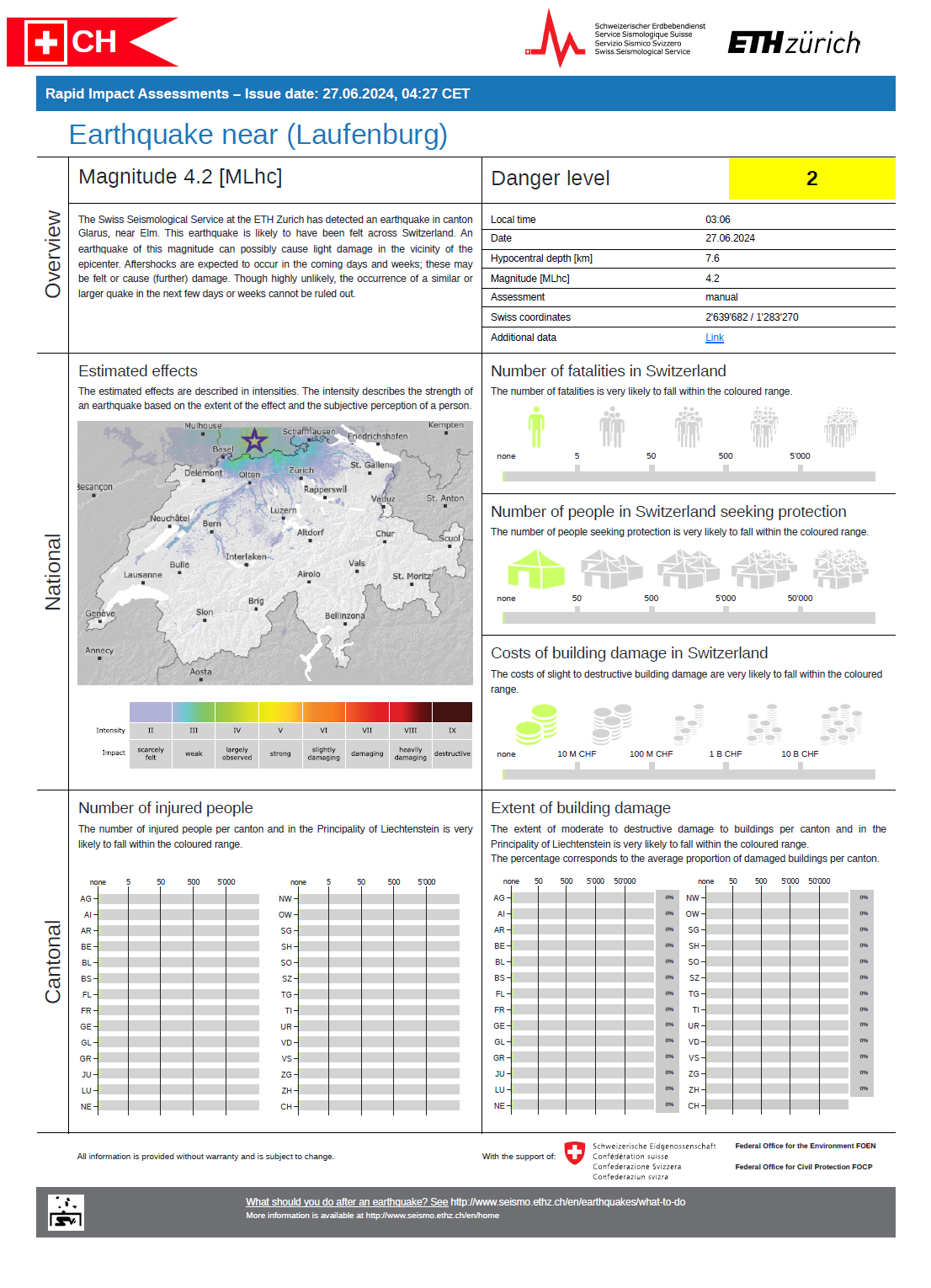Rapid impact assessment
The Swiss Seismological Service (SED) at ETH Zurich will publish a rapid impact assessment for any earthquake with a magnitude of 3 or more. This will inform emergency services, authorities and the public about the expected human and financial consequences of earthquakes that are felt over a wide area or cause damage, doing so shortly after these quakes occur. The assessments are based on the relevant quake parameters and the earthquake risk model of Switzerland published in 2023.
What is shown on rapid impact assessments?
Rapid impact assessments show the impact of noticeable or damaging earthquakes on buildings and the associated human and financial losses. Specifically, information is provided on the estimated number of fatalities, injured people and people seeking protection, as well as the extent of damage to buildings and the expected costs due to damage to buildings. The values given are automatically generated estimates. However, the actual extent of the damage may differ considerably from these estimates, and the accuracy of any information is not guaranteed.
For the time being, different occupancy patterns depending on the time of day and seasonal occupancy fluctuations are not taken into account here, nor are human and financial losses resulting from damage to infrastructure (e.g. bridges, railway lines) or secondary damage (e.g. fire, landslides). In addition, rapid impact assessments of aftershocks disregard the damage that has already occurred and any increased vulnerability of buildings due to previous earthquakes.
Further information on the individual values can be found for each earthquake in the detailed information by clicking on the info boxes or in the PDF of the rapid impact assessment on the second page. For an error-free display, we recommend that you open the PDF files with the free version of the Adobe Acrobat Reader.
What for are rapid impact assessments?
After a severe earthquake, emergency services must rapidly obtain a picture of the situation in order to deploy their resources as efficiently as possible. Rapid impact assessments contribute to this process, especially in the hours immediately after an earthquake when only limited or incomplete information is available from the affected area. It is also very important to keep the public informed in such a scenario. Although large-scale damage is only anticipated for earthquake magnitudes of around 5 or above, the SED already publishes a rapid impact assessment for smaller quakes with a magnitude of 3 or more. This helps to ensure that the whole process from creation through to application can be enacted and practiced on a regular basis. On average, damaging earthquakes occur in Switzerland only every 8 to 15 years.
How to access rapid impact assessments?
On our website you will find the national overviews of the rapid damage assessments in the detailed information on all quakes with a magnitude of 3 or greater. They are usually published within the first hour after an earthquake. This is how long it takes to process the data.
In additions, authorities and the Earthquake Damage Organization (EDO) will have access to cantonal overviews, showing the anticipated consequences of a quake for each canton and its communes. Access to the cantonal overviews is limited because the uncertainties at this level are even greater than at national level, meaning that the values need to be interpreted with due caution.
